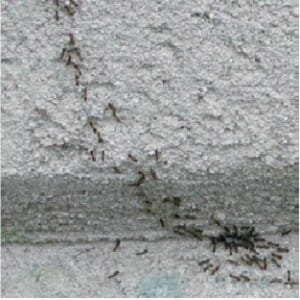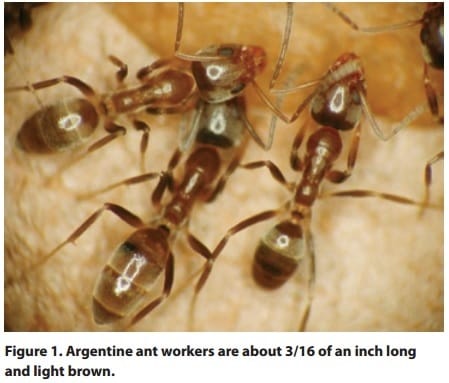This is an excerpt from the UGA publication Argentine Ants by Dan Suiter and Brian Forschler, Department of Entomology

To survive the winter, Argentine ants commonly move into protected environments where temperatures are warmer and environmental conditions more stable. In structures, for example, ants commonly move into voids and other elements of construction that provide a warm, stable environment.
As spring temperatures return, Argentine ants move back into their preferred, outdoor nest sites where colonies grow steadily throughout the warm season. In the Southeast, populations typically peak in late summer. By early winter, declining temperatures once again trigger ants to begin searching for protected overwintering sites, and the cycle repeats.
To prevent large, late-season ant populations, and the resulting problems associated with winter infestations, management practices (especially outdoor baiting) should be started in the spring and continued through the warm season.
There are a number of approaches that can be utilized for the treatment of existing Argentine ant infestations, but no single insecticide-based approach is completely effective. An integrated approach, therefore, that incorporates both chemical and nonchemical techniques is best suited for the management of this ant species. If chemical controls are utilized, read and follow all pesticide label instructions, and never do more than what the label permits.
Before chemically-based Argentine ant control measures are undertaken, a thorough inspection of the indoor and outdoor premises should be conducted to determine the extent and origin of the infestation. The inspection should identify those areas where chemical control approaches should be directed.
The Argentine Ants publication discusses management techniques used to control these ants.
